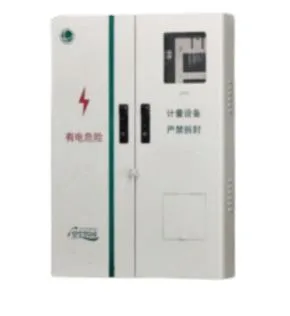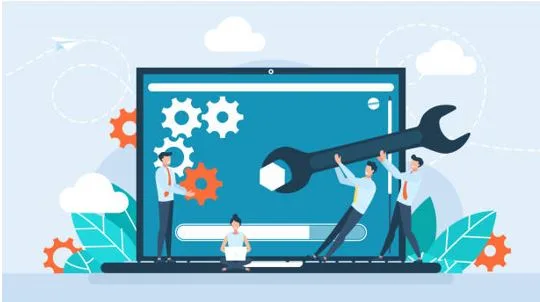Single Phase Energy Meter: Understanding the Basics of kWh Meters and Their Applications
Introduction to Single Phase Energy Meters
A single-phase energy Meter is an instrument that aids in monitoring the electrical energy utilized in a single-phase power supply system. It is most often found in homes and smaller businesses where the demand for power energy is minimal. It tracks energy consumption written in the form of kilowatt-hours(kWh). Single-phase energy meters only operate on one alternating current(AC) voltage cycle, which suits low-power demand systems. These systems are in circuits for lighting, household appliances, and some lighting circuits.
For more in-depth information, you should view the Single Phase Energy Meter – Dadao.
Importance of kWh Meters in Energy Consumption
Kilowatt-hour (kWh) meters are essential for tracking energy and managing consumption. kWh meters allow consumers to track their energy spending, encouraging them to optimize their usage. It also helps for accurate energy billing between the provider and the users as both parties are ensured fair charges. kWh meters also help in identifying consumption trends which help the users in formulating plans for their consumption on the day they intend to save energy. It also helps support achieving the goal of fostering an eco-sustainable environment by mitigating the negative effects of power usage.
View Single Phase Energy Meter for sale – Dadao for More Details
Single Phase vs Three Phase Energy Meters
Single-phase and three-phase energy meters differ in terms of their use and the type of power systems they measure. Single-phase meters are generally used in single alternating voltage line systems, which are lower in power. In contrast, three-phase meters are used in systems with three synchronized voltage lines, which are mostly used in industrial and large commercial setups where power requirements are significantly high. Although three-phase energy meters are more costly, they can handle greater loads and provide more efficient power distribution as compared to single-phase energy meters. Understanding the differences between the two types of energy meters can aid users in selecting the appropriate meter in relation to their energy requirements and system configurations.
Key Features of Single Phase Energy Meters
Understanding kWh Measurement
The unit of measurement that is used for recording energy consumption is kilowatt-hour (kWh). It is used by energy meters to capture energy consumption. This measurement is the energy used when a kilowatt power load is used for an hour. Both single and three phase energy meters are built to kWh measurement standards, and can thus, aid the user to manage energy consumption. Accuracy in kWh allows businesses and commercial users with proper billing systems, load analysis, and energy efficiency optimizations.
Benefits of LCD Display in Energy Meters
Contemporary energy meters have an LCD which displays energy consumption with voltage, current and power factor. They can even show energy used in the past. With an LCD display, the user no longer has to scroll through pages on the energy meter since the consumption data can be accessed at a glance. Unlike other display types, LCDs are energy-efficient and can endure tough conditions which enhances the reliability of the meter. Many models also have backlit displays, which enhance illumination in dark places.
Monitoring with Pulse Output Functionality
Pulse output functionality in energy meters allows for their external monitoring and integration with energy management systems. Users can connect energy meters with data loggers, building management systems, or remote monitoring tools due to pulse outputs, which generate signals at set intervals of electricity consumption. For industries trying to track energy usage trends, identify inefficiencies, and implement cost-saving measures, this feature proves to be a boon. In the long run, the precise energy consumption data tracked with pulse outputs allows for consumption to be acted upon, enabling precision energy monitoring and smarter energy management.
Installation and Usage of Single Phase Energy Meters
Preparation
Check that the DIN Rail Meter fits the electrical panel and conforms to the relevant electrical codes and regulations. Safety is a priority, so confirm that all circuit breakers are off prior to starting the installation.
Affixing the DIN Rail Meter
Secure the DIN Rail to the designated panel slot. Position the meter above the rail, and use the snap-on feature to attach it. Ensure that the meter is stable and locked in.
Connecting the Wiring
Follow the manufacturer-provided diagram for wiring. Firmly attach the live and neutral wires to their designated ports (L and N). For those equipped with load side connection points, make sure the corresponding wires are connected to enable precision in monitoring energy consumption.
Conducting an Installation Test
Perform the installation tests. Ensure that all previous steps were performed correctly. Only after that can the power be turned on for the multimeter’s checks. The readings should be within the expected ranges of voltage and current and the meter must be fully functional.
Set Up and Customize Your Calibration
As with all devices, the correct installation and required configurations, like CT ratio and communication protocols for remote monitoring, are crucial for the proper functioning of the meter. Ensure that all device parameters are within the specifications suitable for your system.
Power Monitoring Optimization
Data Monitoring Frequency
Reviewing previously recorded data for a certain timeframe can help the user identify patterns and predict the energy needs over time. This, in turn, can help the user optimize energy consumption and lower operational expenses.
Combination with Monitoring Systems
With the help of energy management software, the meter can also be used for reporting real-time energy consumption and comparing it with historical data. This kind of integration also helps the user to make proactive decisions and automate their reporting, hence lowering manual workload.
Maintenance Tasks in Regular Intervals
Data accuracy and precision metrics can be retained by routine inspections of device edges to maintain the meter dust-free and to check all device connections for wear and ensure that there are no loose wires.
Diagnosis of Common Problems
Failure to Power the Meter
Causes: Insufficient input voltage or faulty connections.
Check all the wiring in the system for proper connections and make sure that the meter voltage inputs are within the specified values.
Irregular Values and No Output Reading
Causes: Improper calibration or loose wires.
Confirm that all connections are secure and follow the user manual to the calibrations for the device settings.
Smart Meters are Unable to Communicate
Causes: Incorrect device communication wiring or configuration setup.
Solution: Check the communication lines and confirm the settings match the monitoring system protocols.
Overheating of the Meter
Cause: Continuous operation without sufficient cooling results in an excessive load or ventilation.
Solution: Ensure the load distribution is within an acceptable range, improve ventilation in the installation area, and check for possible faults.
To ensure consistent operation and extend the life of their DIN rail single-phase energy meters, users need to follow the installation steps and maintenance routines, and resolve problems as soon as they arise.
Conclusion
The Prospective Development of Single-Phase Energy Meters in AC Systems
Spread of single-phase energy meters in AC systems is expected to correlate with the development of smart grids and the Internet of Things. Such energy meters will likely to include advanced technologies such as real-time data analysis, remote monitoring, and advanced communication systems like Zigbee and Wi-Fi. Given that the world is more focused on energy efficiency and sustainability, future designs are likely to include optimization algorithms powered by artificial intelligence that minimize energy waste even further. In addition, the next-gen meters will likely increase the compatibility with the renewable energy sources, which will ease the integration into solar and wind energy distributed systems. Such an approach will cater to the futuristic need for advanced energy management systems and efficient energy metering in residential and commercial systems.
Final Thoughts on Managing Energy Efficiently
Forget managing energy resources as an isolated activity – successful long-term energy control involves developing a more resilient power structure that enhances systems’ sustainability. Modern energy metering gives consumers control over their usage and facilitates demand optimization. Stakeholders can cut costs, curb emissions, and improve grid stability with innovative smart single-phase energy metering solutions. Achieving these results requires strong monitoring and proactive maintenance coupled with modern technology in energy sustainability.




